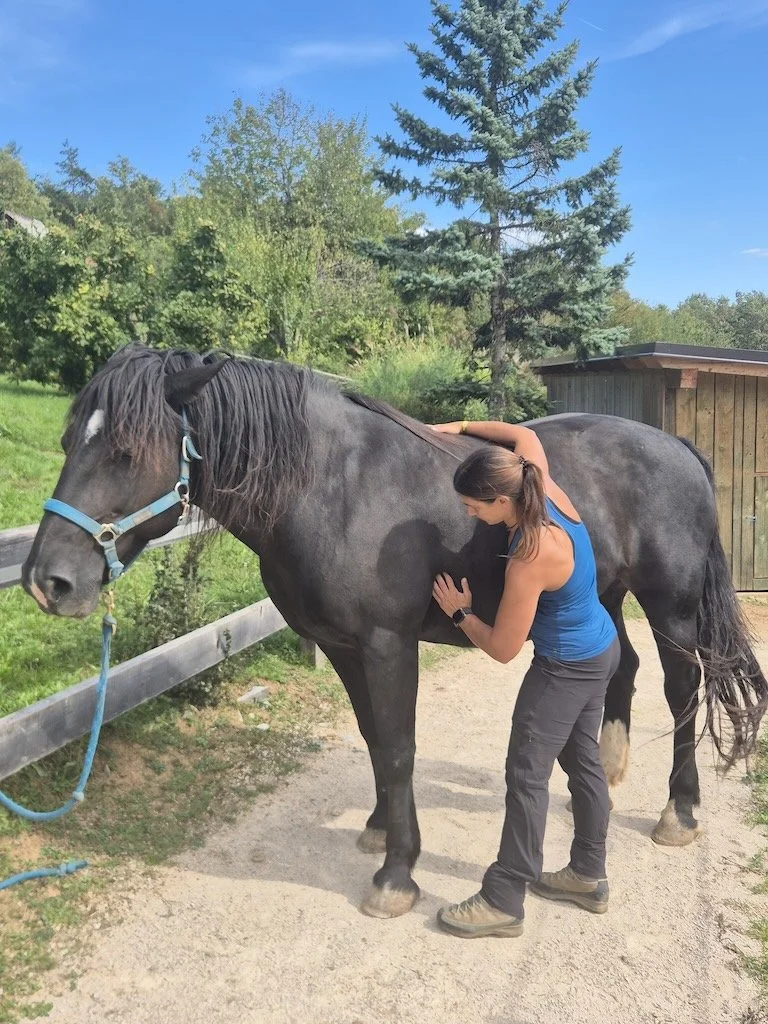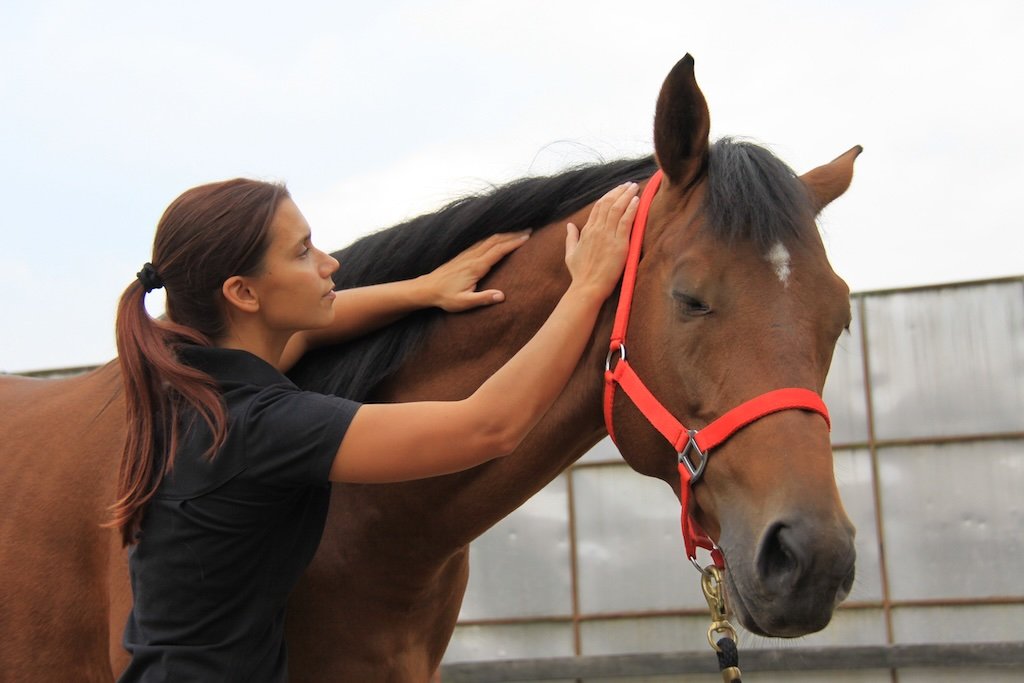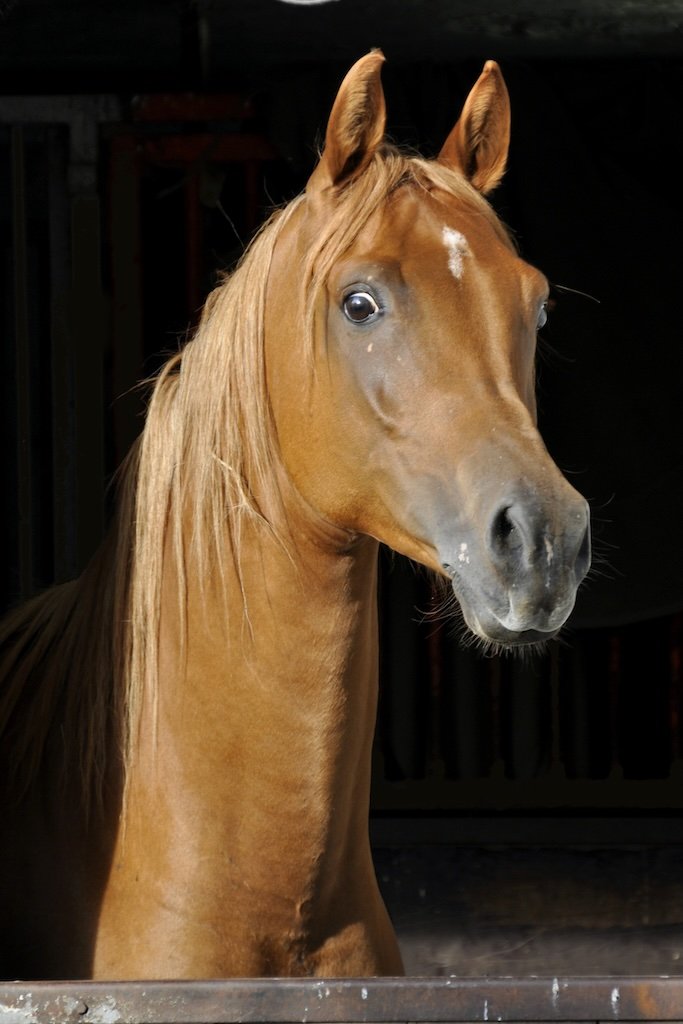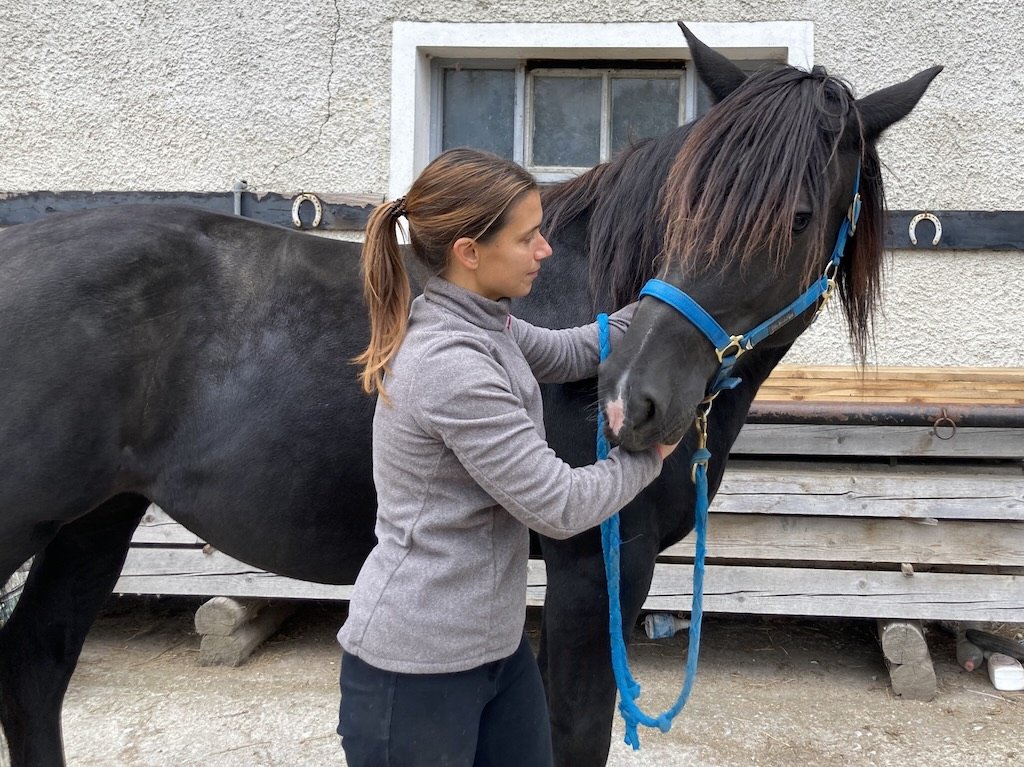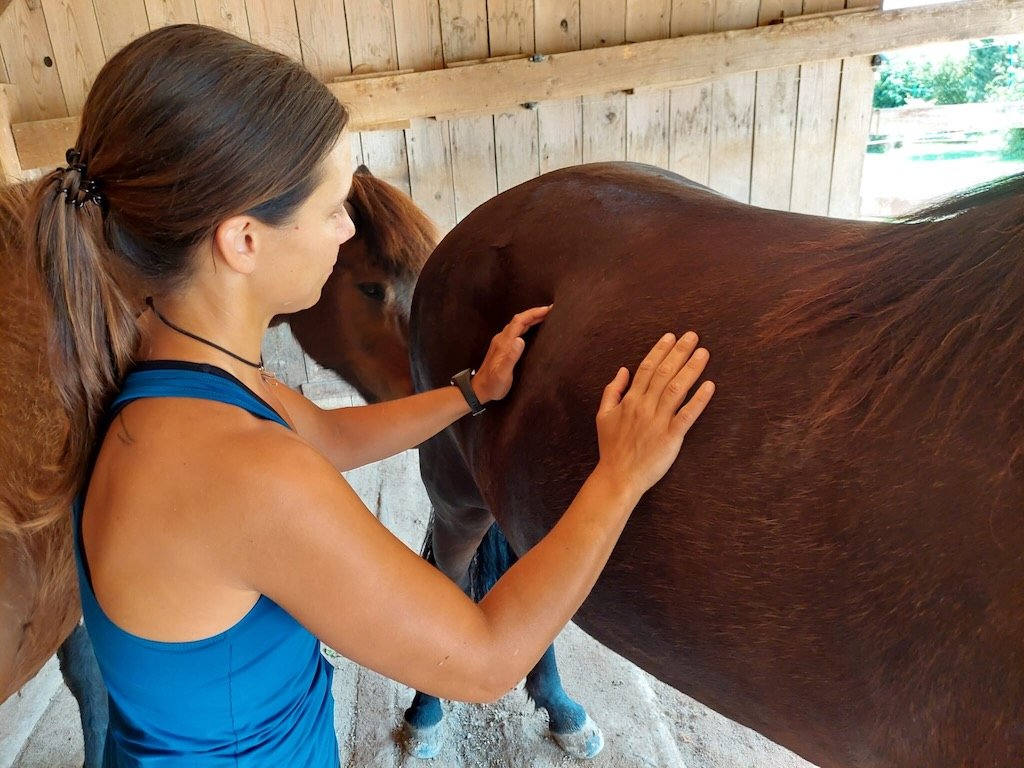The girth line needs your attention!
The area where the girth lies is a very important one from a biomechanics point of view. Restrictions here can have a negative effect on front limb biomechanics, which is why it’s important to address any restrictions here on a regular basis.
The value of gentle bodywork
While it might seem that horses need a firmer form of bodywork, or else nothing will happen, this is often not the case. Gentle bodywork can actually achieve more in a shorter time.
Bodywork for senior horses
Senior horses can benefit from bodywork, but it needs to be adjusted to their specific needs.
How to make life easier for your hoof care provider
Warming up the horse and doing some gentle stretches before a hoof care appointment can make the entire process much easier for both the horse and your chosen hoof expert.
What kind of bodywork does my horse need?
There are many different equine bodywork modalities out there. Deciding which one will benefit your horse the most can be tricky, but at the end of the day, it’s more about the right practitioner than about the right modality.
Releasing the key areas
Three important junctions in the horse’s spine are key to healthy back mobility. Here are some gentle techniques to help release any tension in these areas.
Can stressful events cause restriction and stiffness?
What happens in the mind does not stay in the mind. Stressful events can cause issues in the body, especially tension in the ventral chain of muscles.
Promises to my horse in 2025
Here are some things I want to do better with my horse in 2025.
A Christmas gift for the withers
Here are some simple bodywork techniques for the wither area that you can try on your horse.
Stretching – yes? No? Maybe?
Stretching has many benefits, but we do need to know what we are trying to achieve and which exercises are appropriate for our specific horse.
Misconceptions about carrot stretches
Carrot stretches, or dynamic mobilization exercises, are something most horse owners are at least vaguely familiar with. Perhaps a bodyworker showed them to you at some stage, or maybe you read about it in a how-to article, or maybe you did them without knowing when you were in your trick training phase, teaching your horse how to bow. In any case, most people are aware that carrot stretches are exercises where you guide the horse's head and neck to different positions using a treat, inviting them to take their spine through a varied range of motion. They can have enormous benefits when done correctly, but can also be less than great if not executed properly. Here are some very common misconceptions about carrot stretches.
First aid for back pain
Back pain should always be investigated and addressed as soon as possible. Here are some things you can do to help the horse feel better while you wait for the horse to be seen by a professional.
Want to mobilize the neck? Here's how!
The neck can be a source of pain and stiffness which is why many riders try o use exercises to make it more supple. Instead of bending the neck sideways with the use of reins or carrots, here is a better way to do it.
Taking care of the ribcage
Try these two bodywork techniques to restore range of motion and enable to ribcage to function better.
Tightness – what is the body protecting?
Tight muscles are most often a symptom, not a standalone issue. Whenever we are dealing with recurring tightness, we need to ask ourselves - what is the body trying to protect?
Do foals and youngsters need bodywork?
Even though they are not in work, foals and youngsters still benefit from bodywork. Solving minor issues ca prevent bigger problems further down the line.
4 things you need to know about the iliopsoas muscles
The iliopsoas is a group of three muscles that acts as a hip flexor and can often be a source of dysfunction for the horse. Here are some things to keep in mind about this area.
The benefits of resting postures
A lot of horses have a hard time relaxing and finding comfort in their own bodies. By inviting them into a resting posture, we can teach them that it is ok to relax and let go of the tension in their bodies.
It's never just tight hamstrings
Tight hamstrings is a very common issue in horses, but simply treating the tightness might do more harm than good.
Want to try some bodywork with your horse? Here's how!
If you are curious to try some bodywork moves on your horse, but are unsure how to approach it, here are some basic guidelines to help you on your way.
